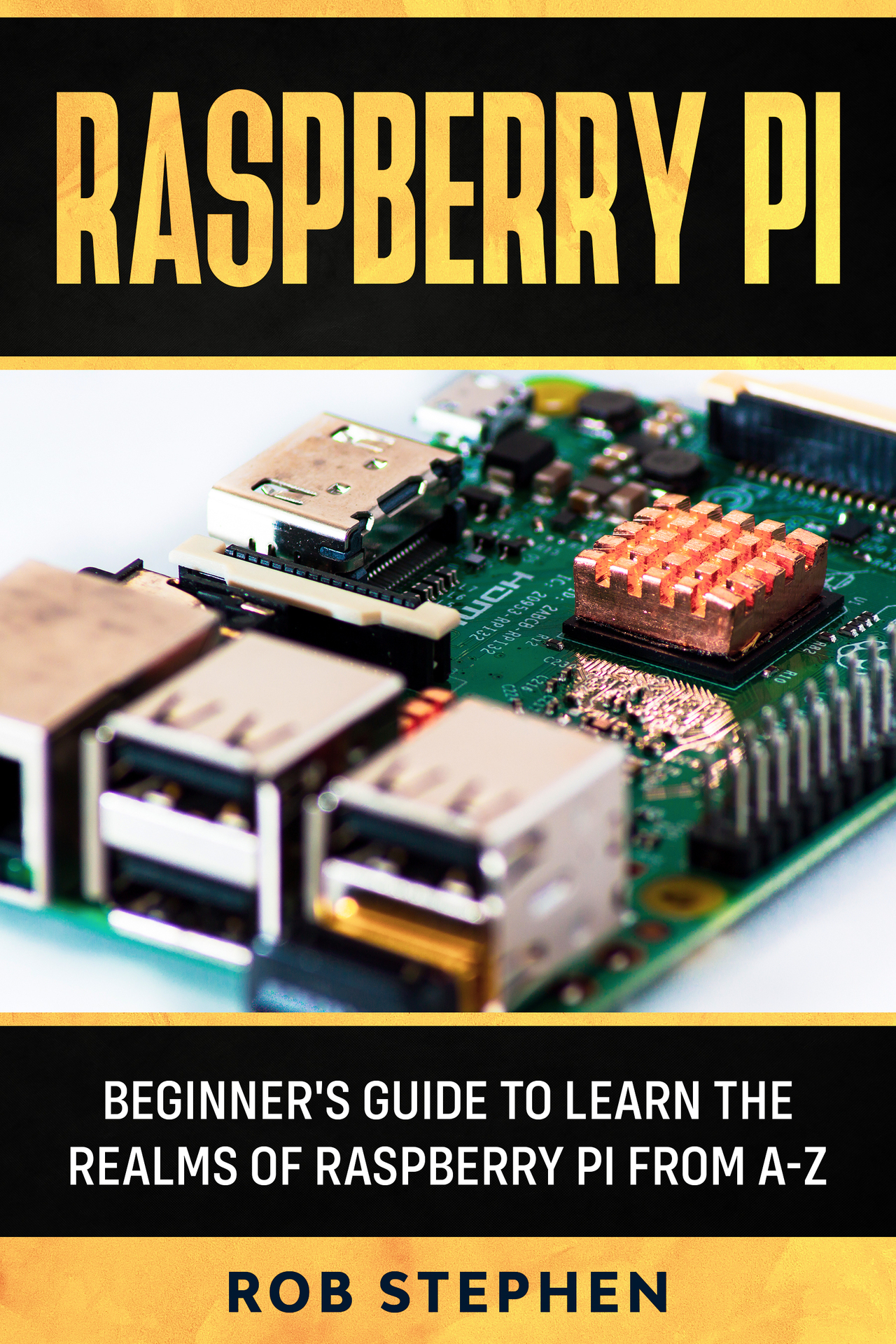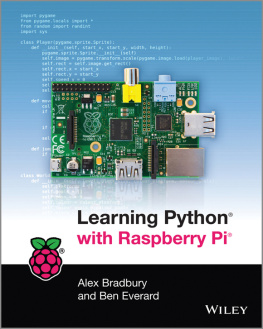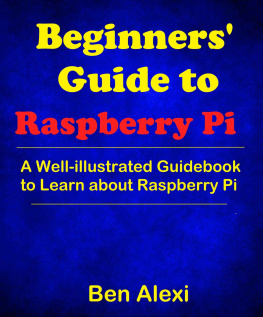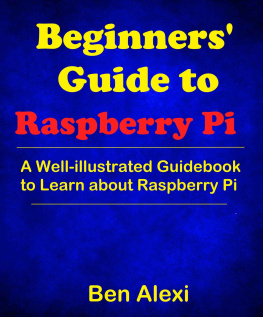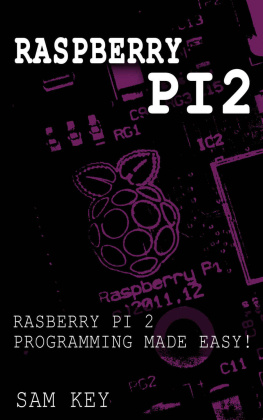RASPBERRY PI
BEGINNERS GUIDE TO LEARN THE REALMS OF RASPBERRY PI FROM A-Z
Rob Stephen
Copyright 2020 by ___ Rob Stephen __________ - All rights reserved.
This document is geared towards providing exact and reliable information in regards to the topic and issue covered. The publication is sold with the idea that the publisher is not required to render accounting, officially permitted or otherwise qualified services. If advice is necessary, legal or professional, a practiced individual in the profession should be ordered.
- From a Declaration of Principles which was accepted and approved equally by a Committee of the American Bar Association and a Committee of Publishers and Associations.
In no way is it legal to reproduce, duplicate, or transmit any part of this document in either electronic means or in printed format. Recording of this publication is strictly prohibited, and any storage of this document is not allowed unless with written permission from the publisher. All rights reserved.
The information provided herein is stated to be truthful and consistent, in that any liability, in terms of inattention or otherwise, by any usage or abuse of any policies, processes, or directions contained within is the solitary and utter responsibility of the recipient reader. Under no circumstances will any legal responsibility or blame be held against the publisher for any reparation, damages, or monetary loss due to the information herein, either directly or indirectly.
Respective authors own all copyrights not held by the publisher.
The information herein is offered for informational purposes solely and is universal as so. The presentation of the information is without a contract or any type of guarantee assurance.
The trademarks that are used are without any consent, and the publication of the trademark is without permission or backing by the trademark owner. All trademarks and brands within this book are for clarifying purposes only and are owned by the owners themselves, not affiliated with this document.
Contents
Introduction
This beginner-level book contains proven steps and strategies on how to use a Raspberry Pi.
Starting with the absolute basics, well gradually move to important concepts that a novice can easily digest. This book has tried to accommodate every type of person who is interested in working with a Raspberry Pi, regardless if you have a tech background or not.
Once you understand and can identify the different hardware components on the Raspberry Pis circuit board, you can gradually move towards learning how to program code on the Raspberry Pi using both the Native Scratch programming language and the widely popular Python programming language. Well go on an interactive journey to explore the programming capabilities of the Raspberry Pi and have provided detailed interactive examples at the end of the programming chapters so that you can learn how to program projects in real-time. And dont miss the useful tips at the end of chapter, which can be very helpful for beginners.
Before ending our journey, we briefly delve into the world of physical computing using Raspberry Pi. Youll end the journey being more capable of designing and understanding practical projects using the Raspberry Pi and will be able to take actionable steps on your own.
Chapter 1: Introducing You To The World Of Raspberry Pi
WHAT IS A RASPBERRY PI?
If you take a look at the structure of the Raspberry Pi, the first thing youll notice is how small it is. The size of a Raspberry Pi is similar to that of a typical credit card. This small form-factor of the Raspberry Pi is itself a characteristic feature of the device, although it may not look entirely like a final product straight out of the box.
When compared to the modern PC motherboards, the Raspberry Pi is a computer that has been made available to the general consumer in an extremely small form-factor, low price tag, and functionality, which you would normally expect from a full-sized Personal Computer. Owing to such characteristics, the Raspberry Pi is suitable for a wide range of purposes. Browsing the internet, playing modest video games, interacting with popular social media channels, the perfect system to learn programming and coding, all the way to using the Raspberry Pi in innovative and creative projects building devices such as retro emulator in variety of forms and controlling and handling complex circuits. The Raspberry Pi does not have one specific use, in reality, it's the complete opposite; in the sense that the limitations of the Raspberry Pi are in actuality the limitations of one's imagination regarding the projects in which this device can be used.
Moreover, theres an entire Raspberry Pi community on the internet dedicated to helping out people in their queries regarding the device. Whether you bought your first Raspberry Pi and need help setting it up or if youre using a Raspberry Pi in a project, you will be surprised at how positively and quickly the community joins the discussion forums and give their suggestions and feedback to your questions.
The Raspberry Pi is a computational device based on single-board architecture. The single-board architecture is a design scheme for computers in which the entire system is situated on a single circuit board. Just as how the Raspberry Pi is based on the single-board architecture, it has also inherited the small form-factor of the design, which is similar to the dimensions of a credit card. However, it is important to keep the power and functionality of a computer separate from the size of its motherboard or circuit, because such parameters of a system are not dependent on how big of a circuit the system is situated upon. As such, the Raspberry Pi is capable of handling and performing all the tasks a Personal Computer would be able to do, but the speed at which the tasks are performed is another realm of the discussion by factoring in different parameters.
The birth of Raspberry Pi was inspired by the notion that fully functioning computers in a compact size made available to the general consumer at a plausible price would hold enough power as to not only facilitate the educational industry but also making computer technology easy to implement and customize in various projects (educational projects, DIY projects or any experiment that can use the prowess of the Raspberry Pi); in short, the prospects are virtually unlimited). The Raspberry Pi Foundations was established in 2012, and after a limited production of units, the beta testing became a huge success and today, Raspberry Pi is the leading device which has taken a strong foothold in various human interactive environments including homes, offices, smart factories, data centers, interactive classrooms and other such places which can take advantage of the features of a small hand-held computer.
Different Models of Raspberry Pi
Since the journey of Raspberry Pi began to invoke the innovation among young programmers, The Pi system has gone through a series of revisions up till now, and since 2012, a total of 11 models of the Raspberry Pi have been released, beginning from;
Raspberry Pi B (2012)
Raspberry Pi A+ (2014)
Raspberry Pi 2 (2015)
Raspberry Pi Zero (2015)
Raspberry Pi 3 (2016)
Raspberry Pi Zero W (2017)
Raspberry Pi Zero WH (2018)
Raspberry Pi 3B+(2018)
Raspberry Pi 3 Model A+ (2018)
Raspberry Pi 4 B (2019)

